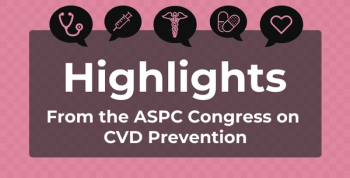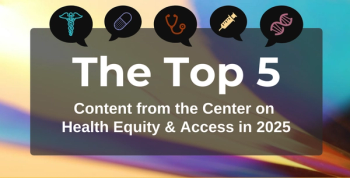
Dr Jaime Davidson Offers Insights, Guidance on Diabetes and COVID-19
In the United States, diabetes mellitus is the most frequently reported condition among the 7162 coronavirus disease 2019 (COVID-19) cases for whom comorbidity data is available, according to new CDC information.
In the United States, diabetes mellitus is the most frequently reported condition among the 7162 coronavirus disease 2019 (COVID-19) cases for whom comorbidity data is available, according to
The
Chronic lung disease (9.2%) and cardiovascular disease (9.0%) were the most frequently reported comorbidities behind diabetes. The percentage of cases resulting in an intensive care unit (ICU) admission was also higher for those with underlying health conditions (13.3%-14.5%). In comparison, 2.2% to 2.4% of individuals without these conditions were admitted to the ICU. These preliminary results are consistent with findings in China and Italy, researchers said.
Although there are no data as to whether individuals with
As the CDC released new information on underlying health conditions, one endocrinologist laid out effective protocols and recommendations for the diabetes community.
“We need to be in prevention mode. We don’t have immunizations, we don’t have a treatment,” said Jaime A. Davidson, MD, FACP, MACE, professor of medicine, Touchstone Diabetes Center, The University of Texas Southwestern Medical Center, in an interview with The American Journal of Managed Care®.
Davidson notes that in the United States, at least 30% of patients with diabetes do not effectively manage the condition. “I assure you that if they don’t take precautions, they’re going to have more problems if they get the virus than people that are healthy.”
Diabetes makes it harder for individuals to fight off infections due to the presence of ambient glucose, which leads to high blood sugar. “You fight infections with your white cells. Those white cells that fight infections are a little sluggish every time your glucose is higher,” Davidson explained. This makes it easier for bacteria to grow and more difficult for white cells to fight off infections. “I think the same will be true when you have lung infections…Once [COVID-19 is] in, it destroys the tissue, in some people very rapidly.”
Over 30 million Americans are currently living with diabetes. For this population, there are several precautions and practices that can help reduce transmission, especially social distancing and frequent hand washing. Davidson also noted the importance of staying hydrated. “Trying to lower the glucose, trying to be hydrated, taking the insulin correctly, measuring the glucose is very important…the higher your blood sugars, the more behind in fluids you are.”
Individuals with diabetes can also be more prone to depression. For patients with diabetes, “staying home is not so simple; it’s easy to get depressed.” To combat this, regular communication and check-ins, especially with
Additional best practices include continuation of regular medication. “There’s a lot of misinformation,” Davidson said. “You need to emphasize that [patients] should continue to take the medication as prescribed.”
Currently,
“The pharmacies keep track of all the patients that are taking SGLT2 inhibitors, insulin, metformin.…[They] should be able to send messages to the patient, explaining what they need to do at this time,” Davidson said.
Davidson also offered some insights to quell concerns regarding the insulin supply chain. Even with new working-from-home restrictions, “the supply is sustainable,” he said. “These factories are working on a regular basis because the technology that is there requires very little human interaction. One you have it flowing, you actually don’t need to worry."
More concerning to Davidson is access to insulin, typically covered by insurance. With
“My concern is that millions of people [have] lost their jobs and have lost their health insurance,” Davidson said. “Public health and the media and all of us have to get the message to the patients, where and how they can get insulin supplies if they have no insurance.” If individuals are struggling to afford insulin, they can visit
“We need to emphasize that in this type of situation…if patients show that they cannot afford insulin, and they don’t have insurance, supplies of insulin will be available to everybody.… This could be our biggest challenge,” Davidson remarked.
Despite increased travel restrictions and disruptions to everyday life, Davidson is hopeful that if individuals do their part by staying home, things can get back to normal sooner. “What I see [as a] positive is that we have the best people in the world working together, [but] we need to be very proactive” to combat and mitigate the spread of the disease.
Newsletter
Stay ahead of policy, cost, and value—subscribe to AJMC for expert insights at the intersection of clinical care and health economics.








































